7. The Products
Many of James Gibbons many products can be
seen elsewhere on this web site. The company made millions of
locks and other items of door furniture and architectural wares.
Eve what might seem like standard products were made to a very high
standard.
To look at such a mundane candlestick made by James Gibbons, will
suggest quality and longevity. not cast as one piece to just light a
room, but made like an article of character to be looked at as well
as the flame that surmounted it.
Made from eight parts of individual castings, each having to
be finished and bronzed to perfection to produce a unit that was of
quality and desirability.
It is no wonder that Sir Christopher Wren was a customer followed by
other nationally famed architects.
But the real skills of the workmen were often called into play for
special, one off items. A lot of these were the responsibility
pf the Art Metal Department.
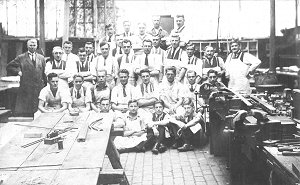 |
The Art Metal Department
in a photograph of 1933. The names appearing on the
photo are: Elkin, Edwards, Hitchman, Bayliss, Jenks,
Critchlow, Williams, Tittensor, Heyweed, Connelly, Knock,
Edwards, Reynolds, Handley, Hallett, Shinton, Hales, Tarver,
Ireland, Hall, Hartland, Sidebottom, Beddows, Richards,
Wharton, Stan ?, Fox, Reeves. |
| The Art Metal Department
in their shop, also photographed in 1933. |
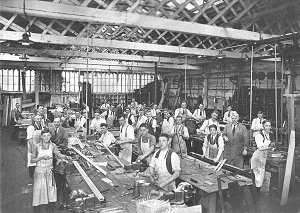 |
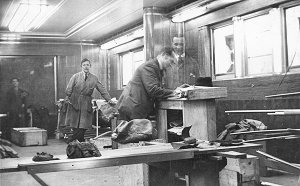 |
A less posed (and more
relaxed!) snap taken in the Art Metal Department. |
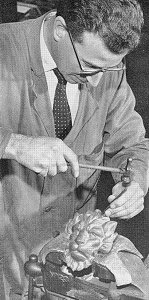 |
On the left Graham Chalk
chases a bronze, lion head door knocker. (Chasing
brings out the details from a casting and provides a quality
finish).
On the right Norman Claxton (who
was with Gibbons for more than forty years) holds one of the
bronze door handles made for the rebuilding of the House of
Commons. |
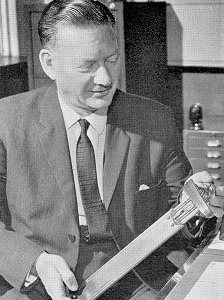 |
Here are just a few more examples of Gibbons products from photos in
my collection. They range from the artistic one offs to the
more mundane items and even the macabre..
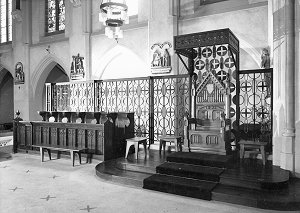 |
Canopy for the bishop's
throne and railings made for, I believe, Cardiff Cathedral. |
|
Ornamental church gates. |
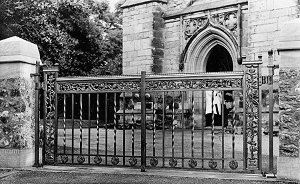 |
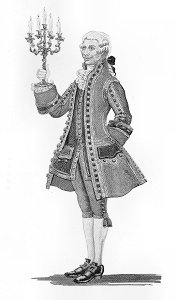 |
This is Mr. Mason of
Fortnum and Masons. In the 1960s twelve Gibbons
craftsmen worked for eighteen months on the decorative
metalwork for the famous carillon clock on Fortnum and
Masons store in Piccadily, London. |
| Crown House, Birch
Street, Wolverhampton, for which Gibbons provided all the
window frames. |
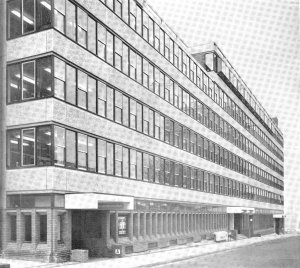 |
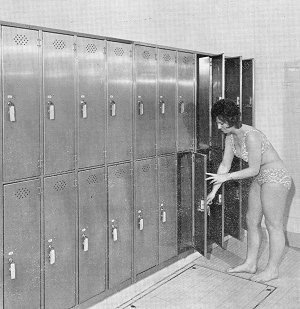 |
Lockers for changing
rooms. Gibbons invented the lock which requires a coin
to be inserted before the key is removed and the locker
closed and which returns the coin when the key is reinserted
and the locker opened. |
| George Millard (who
worked for Gibbons for over thirty years) making final
adjustments to a motorised mortuary rack. The TI
magazine, in 1968, called this a "very steady selling line".
They also mentioned "British Rails new luggage racks in
stainless steel, firemen's lockers, and poison drug cabinets
for hospitals fitted with special locks and opening
devices". |
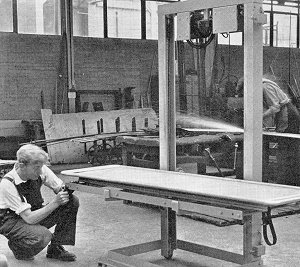 |
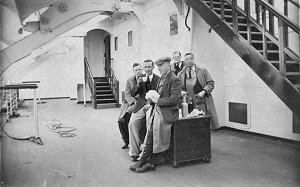 |
Workers from the
factory often had to travel to see to the installation of
their products. |
| Here a group of workers
were snapped on board the Queen Mary, just before she sailed
on her maiden voyage. They had been carrying out work
on the fittings. |
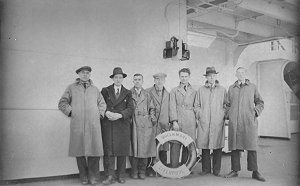 |
Nefertiti and Akhenaten
Somewhere, someone has a unique and quite valuable artefact without
knowing its history. This is a perfect
replica of the head of Nefertiti, the wife of Pharoah Akhenhaten.
This almost unbelievable story in Gibbons history of course
will be ridiculed by some who would not believe that two of the mort
precious artifacts in the history of the world should be lodged in a
safe in the back streets of Wolverhampton.
Both the heads of Akhenhaten and his Queen Nefertiti were in
the factory of James Gibbons in the late 1920s shortly after Howard
Carter had found the tomb of
Tutankhamen in 1922.
These heads had been loaned to Britain by the Staatliche Museum,
Berlin, before Hitler came to power or shortly after, as there is no
doubt that he would not have given permission for such objects to
leave Germany.
Of all the workshops of
Britain, Gibbons were given the job of trying to capture the process
of casting used in Egypt at the time of the pyramids.
They had to produce an exact copy of the mask or face of
Akhenaten and to do this they had to use both heads
to get it right:
only a man of the highest skill in casting would be allowed to carry
out this task and Gibbons had such
a man, Fred Wakeman.
Such was the success of Fred Wakeman and the dressers and finishers
that Mr James Gibbons had a book of appreciation printed and
presented to the caster.
That book exists in the Wolverhampton area as a family heirloom.
A condition of the exercise was that all testing products and
practice heads should be returned to the furnace to prevent
proliferation of such wonderful objects.
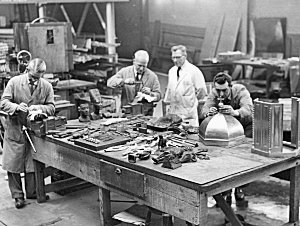 |
A photograph of the Art
Metal Department at work, taken some time after World War
Two. But what are the two items at the far end of the
workbench? |
| This enlargement from
the photograph above shows the two items at the far end of
the workbench. That is Nefertiti on the right and
Akhenaten (without a crown) on the left. |
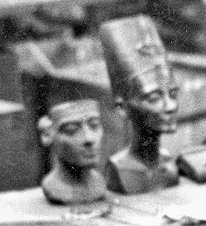 |
It is now obvious that this was not strictly adhered to as right up
to the retirement of Mr Paul Gibbons, and afterwards, a head of
Nefertiti stood on the board room mantleshelf.
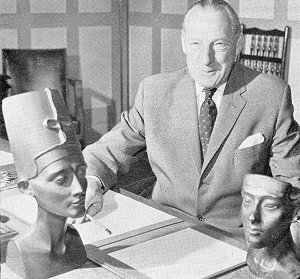 |
On his retirement in
1968 this photograph of Mr. Paul Gibbons appeared in the TI
magazine. There is no doubt about what he has chosen
to be photographed with. |
Later it was seen to be gathering dust in several departments until
it suddenly disappeared.
Someone now has it, who may know it is Nefertiti but does not
know its worth as an exact copy that should not be in existence.
And Akhenaten himself must be around somewhere.
|